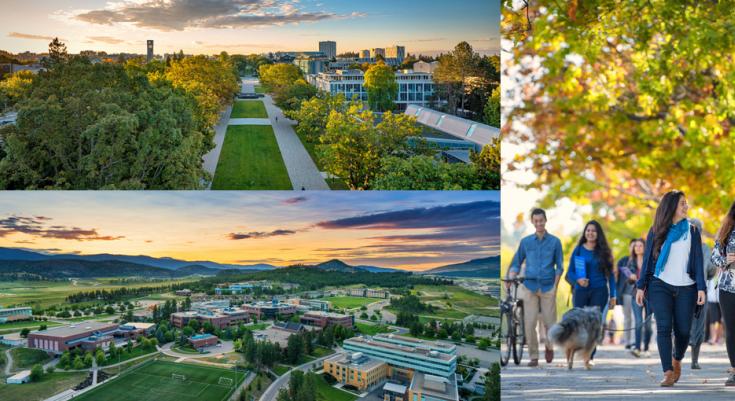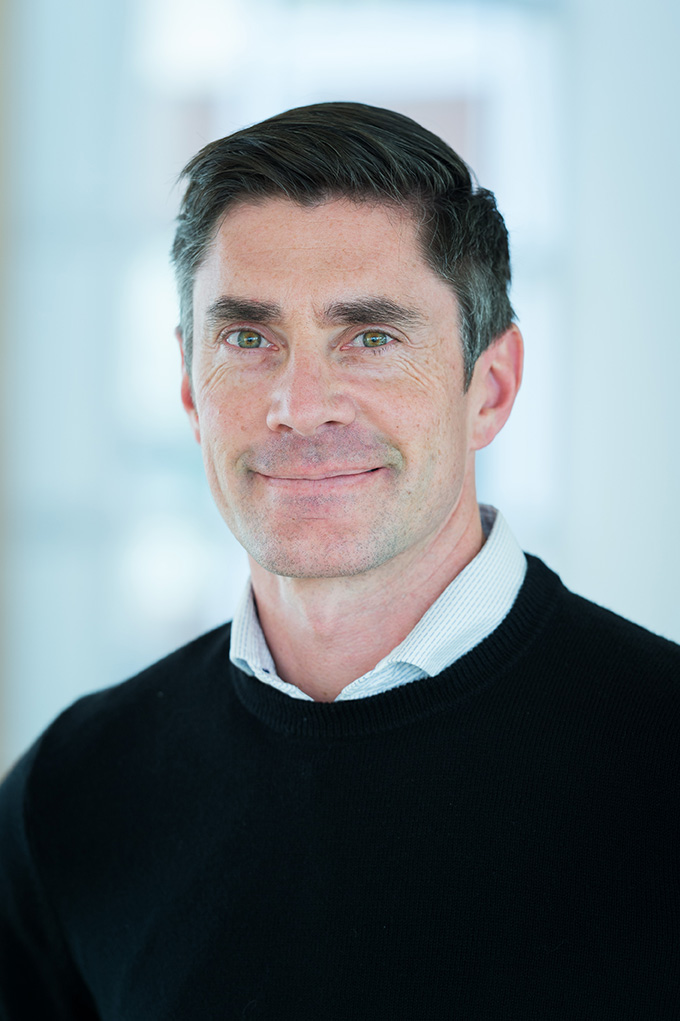
This month we sat down with Campus and Community Planning’s Associate Vice President, Michael White, to take a look back at campus planning in 2016 and ask him about what we can look forward to in 2017.
What are some of highlights from 2016?

I’d say that seeing Orchard Commons come to life with over 1000 new student beds, combined with Vantage College and the future child care space, was one of the biggest highlights. They add such a dynamic element to our campus and, in combination with the Quantum Matter Institute and Undergraduate Life Sciences Teaching Lab projects, are an integral part of the ongoing implementation of the UBC Vancouver Campus Plan. These initiatives not only support UBC’s academic mission of teaching, learning and research, they also contribute to a vibrant and complete campus community where people experience our campus in so many ways.
The transformation of UBC’s outdoor spaces is my second highlight. It’s a pleasure to watch these areas buzz with activity as students, faculty, staff, and alumni enjoy them. We’ve been very focused on developing the campus as a place that enhances educational experiences, promotes learning opportunities and supports physical and mental wellbeing [through the Public Realm Plan]. Harvest Feastival at University Commons this year in front of The Nest was a great example of that in action.
Of course we are also in the middle of the UBC GamePlan planning process and development of a 20-year athletics facilities strategy, which will help bring much needed recreation space to campus and address aging facilities like War Memorial Gym and Thunderbird Stadium.
A final highlight is the ongoing partnership with the UNA on programs and initiatives that help build and shape our community. UBC and the UNA have worked closely together to address emerging issues, such as the provincial downloading of fire services costs to the neighbourhoods. Through this collaboration we’ve ensured that residents taxes will not increase, and that services levels will be maintained.
What were C+CP’s priorities over the past year, and what are some examples of how those come through in the department’s work?
There’s been a great deal of work done to support the innovation and the research mission of the university. We’ve also focused on enhancing the campus experience, and how we engage with our communities on issues that affect them.
We’ve had success through Campus as a Living Lab projects, where we are both providing support to our researchers and academics and actually getting engaged in the research itself. A great example is the SEEDS (Social, Economic, Ecological, Development Studies) program which won the GUPES (Global University Partnership on Environment and Sustainability) Green Gown Award for Student Engagement for fostering innovative projects like developing mushroom furniture, a sustainability revolving fund, temporary public art and so many others around campus. We are really proud of this program because it shows the direct impact our close connection with UBC researchers and students has on and off campus.
One of the really big projects of 2016 has been at the UBC Okanagan Campus where we are working on an Innovation Precinct plan. This new area will become a place where industries can partner with researchers, and it's a really big opportunity for economic development in the central Okanagan that involves business, the City of Kelowna and the regional district.
In September last year, UBC announced the construction of the Indian Residential Schools History and Dialogue Centre. How do you see C+CP continuing to engage with the Musqueam First Nation?
We have been working with the Musqueam much more closely on planning and development on campus. The process to design the Indian Residential Schools History and Dialogue Centre, Library Garden, and the Musqueam House Post that was installed last year on University Boulevard are good examples of our growing relationship. We’re also working with the Musqueam and various partners in planning for the installation of an extraordinary work of art by Haida artist James Hart. It’s called the Reconciliation Pole and it’s meant to recognize the lasting effects of residential schools in Canada, and serve as a symbol for reconciliation and moving forward together.
How is C+CP helping to develop more complete communities?
Our goal is to create a vibrant, sustainable and complete community where people can live, work and learn together. To support this goal we are focusing our planning efforts on creating a diverse range of housing to accommodate everyone from individual students to families, promoting sustainable transportation choices, and creating policies that will enhance the social and environmental wellbeing of our campus community.
This is such a diverse campus, with over 20,000 students, faculty, staff and residents that call UBC Point Grey home, and so much of our planning and design work involves connecting this community to the place where they study, work, play and live. We are also doing this thorough dynamic community programs and activities that connect and engage people with the campus landscape, public spaces, cultural amenities and athletic assets. So from both a planning and program perspective we are striving to directly promote the health, happiness and wellbeing of this large and distinct community.
Child care is another way we are supporting creating a complete campus community. We have been working closely with the University Neighbourhoods Association (UNA) to develop new child care spaces on campus. This is one of the biggest needs facing families at the University, and we’ve already had one child care centre open up in the East Campus neighbourhood with another on the way at Wesbrook Community Centre.
What can we look forward to in 2017?
We’re part of a university first and foremost, so our work will always be focused on supporting the academic mission of research, teaching, and learning.
A big part of our innovation agenda, continuing into 2017, is being better connected in the region to industry, government, and health partners. Transportation is a key part of that and we’re going to continue to work very closely with City of Vancouver, Translink, and other partners on the next phase of the Translink 10 Year Vision for Transportation for Metro Vancouver and the completion of a rapid transit extension to UBC. A huge part of our job is to support that conversation.
We will continue to focus on enhancing the campus experience because it is fundamental for developing a healthy and vibrant community, supporting the academic mission and making this a great interesting place to be for students, faculty, staff and neighbourhood residents. Through a number of programs - whether it's grant programs with the UNA or signature events like the annual Harvest Feastival - we focus a lot of our energy on how campus is experienced by the community and we'll be intensifying that in the coming year.
An area going through a big transformation is Library Garden, the green space between Koerner Library and the Irving K. Barber Learning Centre, and the space that will surround the new Indian Residential Schools History and Dialogue Centre. When it’s complete the UBC community will not only be able to visit the Dialogue Centre, but will also have a reimagined green space at the heart of campus to enjoy.
In the second half of 2017 our big focus will be the planning process to develop the Stadium Road Neighbourhood, a follow up to the UBC GamePlan process. As Wesbrook Place Neighbourhood will be completed in the next five to seven years, we are now getting ready for the next campus residential neighbourhood; and Stadium Road will be located in the area around Thunderbird Stadium. That planning process will start later in the year and there will be many opportunities for people to engage with how that is shaped. It’s one we are really looking forward to working with the campus community on!